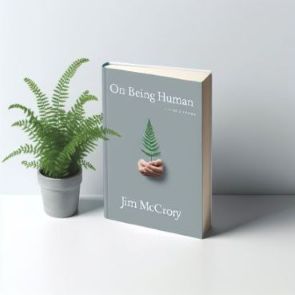
The Classical Pulse From the Billy Joel Songbook
My wife and I are walking down Buchanan Street, heading for the train home. We have just been to Elio Pace: The Billy Joel Songbook concert at the Glasgow Royal Concert Hall. It was an electric show, with adrenaline running on steroids from the start with quiet moments and fascinating story telling. The music was enhanced by the full house of the appreciative audience from seven years old and upwards.
My wife asked, “What was your favourite part?”
“That section where he stripped down some Billy Joel songs and showed the link to classical music — I could have listened to that all night.”
So, Elio, if you’re reading this, how about a show where you take modern songs and reveal their classical roots? Just you and the piano. I’ve put it on my imaginary bucket list now.
My cancer affects my memory, so I cannot recall the exact songs now, but what Elio Pace does on his tours is more than entertain; he opens doors. Behind the crowd-pleasing hits and singalong choruses, he invites us to listen deeper — to hear the centuries-old architecture beneath the surface of songs we thought we knew.
Uptown Girl, not just a bouncy, finger-snapping pop song; but slowed down and reimagined, it reveals the poise and balance of a Mozart minuet. Billy Joel himself once said, “Uptown Girl could’ve been a Mozart piece,” and in Pace’s hands, the claim felt less like a boast and more like a quiet truth.
Then there is This Night. I’ve listened to that song many times over the years, but I had never realised its chorus was lifted almost note for note from the second movement of Beethoven’s Pathétique Sonata. It’s not just an homage; it’s a dialogue across centuries. Joel didn’t merely borrow from Beethoven; he wove that melancholy lyricism into a new story, blending the emotional world of 18th-century Vienna with the language of the modern songbook.
Even songs without explicit classical quotations revealed their lineage once Elio placed them in context. Scenes from an Italian Restaurant, with its shifting movements and recurring motifs, plays like a miniature symphony, unfolding in acts rather than verses. And So It Goes, stripped of ornament, carries the stillness and purity of a Schubert lied. One by one, Pace peeled back the layers, showing how the tools of melody, harmony, and structure, tools that shaped the works of Bach, Mozart, and Beethoven, still shape the music of our time.
ELIO PACE - Scenes From An Italian Restaurant - 'The Billy Joel Songbook® Live' (Official Video)
I left the concert thinking about continuity, how art transcends its moment, how a melodic shape born two centuries ago can slip quietly into a modern song and feel as alive as ever. Beneath all our reinventions, there is a shared grammar of beauty, a yearning for order and meaning that hasn’t changed. Joel knew that. Pace revealed it. And in that revelation, he reminded us of that popular music and classical music are not worlds apart but chapters of the same story.
As we turned the corner onto Gordon Street, the city lights reflected in the pavement reminding me it was late. And in my quiet thoughts, I felt grateful for what I had just heard, not just the songs themselves but the invisible thread that connects them to something larger, older, and enduring. Maybe that’s why I hope Elio Pace takes up my imaginary request one day. Because hearing that connection spoken aloud, in music older than memory and newer than today, is a reminder that beauty never really disappears. It simply changes its clothes and carries on singing.
In our evening prayer, my wife and I thanked our creator for the gift of music.
Image by Copilot